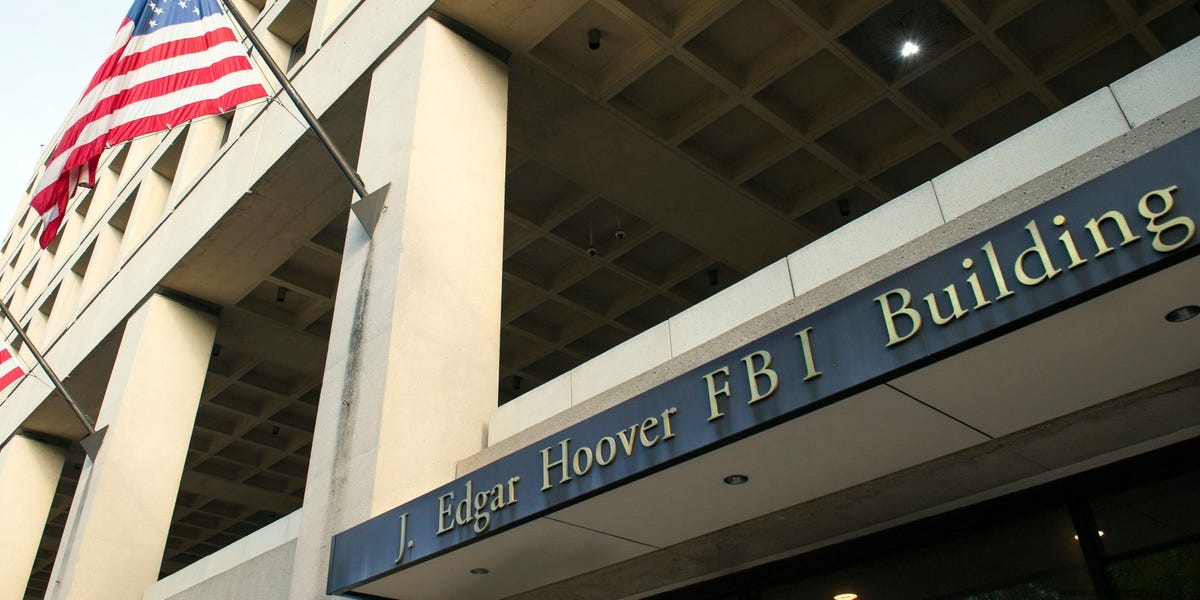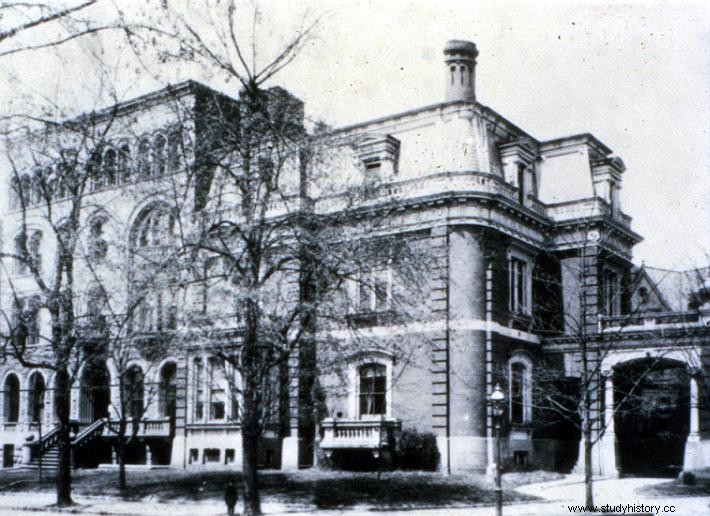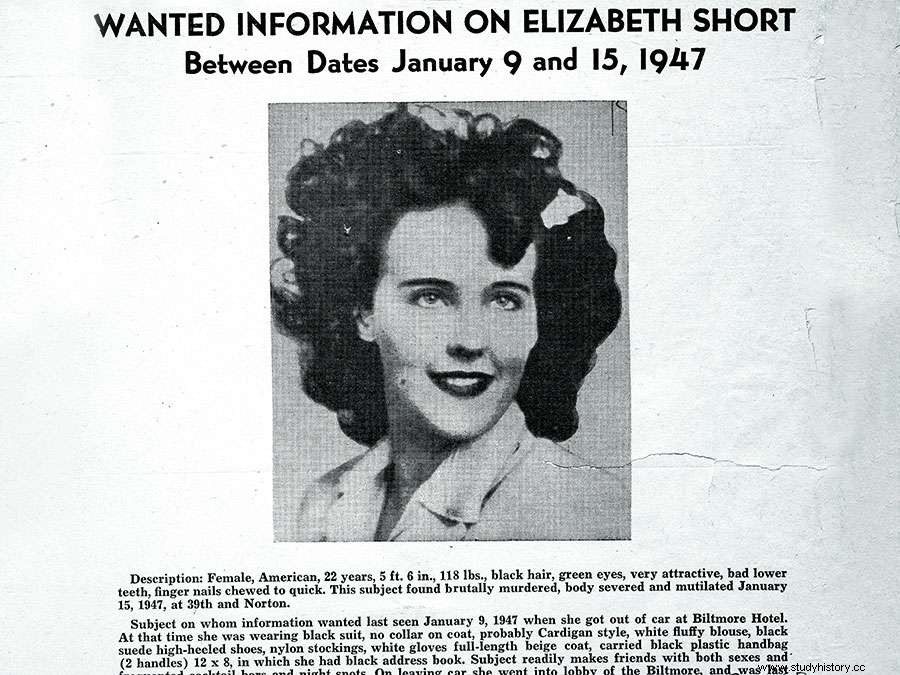For 113 years and beyond, the Federal Bureau of Investigation (FBI) serves as the most important law enforcement agency in the United States. Starting as a BOI with J. Edgar Hoover, the FBI continues to protect the nation's interests in resolving cases that threaten America and its people.
TV shows and movies show different aspects of the case, the FBI and its various departments, as well as those who work for it. From trainees to directors, audiences around the world are able to see the processes and regulations taken to protect the United States and its people. Such shows and movies include X-Files, Criminal Minds , The Highwaymen and Socario . However, the formation of the FBI is rarely seen on screen.
From 1908, the FBI expanded from 10 agents to over 35,000. From working in the Baltic Hotel to the J. Edgar Hoover building in Washington DC. The development helped prevent attacks and preserve the nation's interests.
What is the FBI?

The Federal Bureau of Investigation is the investigative arm of the US Department of Justice (DOJ), the country's primary investigative and domestic intelligence agency.
Its mission is to protect the American people and uphold the United States Constitution.
Among the priorities are protecting the United States from terrorist attacks and from foreign intelligence and cyber operations, as well as civil rights. In addition, it fights significant cybercriminal activity, public corruption, temporary criminal activities, widespread white-collar crime and significant violent crime.
The FBI Formation

The DOJ, established in 1870, enforces federal law and coordinates judicial policy. However, it lacked its own investigative power. They often hired private detectives or borrowed investigations from other federal agencies, such as Secret Service.
Originally, in 1865, the Secret Service investigated forgery.
In 1901, an anarchist assassination attempt on President William McKinley brought fears that anarchists were threatening the United States. The Department of Justice and Labor kept records of known anarchists for years, but President Theodore Roosevelt wanted more power to monitor them.
In 1908, Roosevelt gave approval to Attorney General Charles Bonaparte to form an autonomous investigative service against the wishes of Congress. This service will only report to the Attorney General. Bonaparte contacted other agencies, such as the Secret Service, for personnel, especially investigators. Part of the force ended up including former Secret Service agents.
Bonaparte ordered this special force to report to Chief Investigator Stanely Finch. Many see this as the formal start of the FBI
In March 1909, Attorney General George W. Wickersham called the Bureau of Investigations (BOI)
However, Congress banned this because they feared the new agency would become a secret police department.
In a 1908 memorandum, Bonaparte stated that it was "a regular force of special agents" who would handle all investigative cases of American lawyers.
The BOI officially began on July 26, 1908.
The BOI was renamed the US Bureau of Investigation in 1932. In 1935 it was renamed the Federal Bureau of Investigation.
Special Unit
Originally, BOI charged criminals who avoided punishment under state law by crossing state lines. It evolved to enforce federal laws. Within a few years, the number of agents grew from 10 to 300. However, this increase worried members of Congress that the BOI would abuse their newfound power.
The Mann Act of 1910 (also known as the White Slave Traffic Act) blocked the transport of people across state borders for the purpose of engaging in sexual activity. BOI took the lead in investigating violations of the Mann Act.
The Espionage Act of 1917 prohibited the collection of information, the taking of photographs or the copying of descriptions of information on national defense for the purpose or reason of harming the United States or providing benefits to a foreign nation.
This became BOI's first nationwide domestic surveillance program. It included eavesdropping on conversations and opening mail from suspected criminals. In addition, it authorized the agents to investigate resistance moves, violations of espionage law and immigrants suspected of working against the state.
President Woodrow Wilson authorized the BOI to arrest the enemy '"aliens".
J. Edgar Hoover
The growing fear of communism in the United States led to a 'Red Scare', the promotion of fear of a potential emergence of communism, anarchist or other left-wing ideologies. This continued to grow after bombings by anarchists against national leaders.
At this time, Attorney General A. Mitchell Palmer headed the BOI
A young attorney for the Department of Justice became Palmer's Special Assistant, J. Edgar Hoover. Hoover contributed to BOI's response to 'Red Scare'.
He led the establishment of the index system that listed all radical leaders, organizations, and publications in the United States. In 1921, Hoover collected around 450,000 files, resulting in agents arresting between 6,000 and 10,000 suspected communists, also known as the 'Palmer Raids'.
The Palmer Raids made headlines for their success. In contrast, the BOI was immediately criticized for violating the civil liberties of thousands of people.
Hoover rose quickly in the DOJ when he was appointed BOI's Assistant Director.
In 1924, Attorney General Harlan Fiske Stone made Hoover acting director on a temporary basis.
As a 29-year-old, Hoover remained director of BOI for the next 48 years.
BOI restructured
During his tenure as director, Hoover restructured and expanded the agency. Among his innovations were the creation of a centralized fingerprint file, a forensic laboratory and a training school for agents. As a result, the fight against crime increased effectively.
This helped with successful catches and killings of high-profile crime bosses. For example, John Dillinger and Louis 'Lepke' Buchalter.
Prohibition and BOI
Between 1920 and 1933, Prohibition prohibited the production, import, transportation and sale of alcoholic beverages. It brought a groundbreaking wave of crime in cities across the country.
To combat this, Hoover reformed the BOI, to make it a more professional, effective force. He fired sub-par investigators and those he saw as political appointees. In addition, he set a strict hiring process and strict ethical guidelines for all agents.
In 1919, the BOI released its first Wanted poster. Later, similar posters circulated in the United States, Canada, and Europe
In 1950, the FBI debuted its list of the ten most wanted refugees.
The Great Depression
The profile of the FBI rose during the Great Depression (1929 - 1933). This was especially for the hunt for known, notorious criminals John Dillinger, Bonnie and Clyde, George 'Machine Gun' Kelly and Alvin Karpis.
World War II FBI (WWII)
The FBI investigated national security threats, including US Nazi, fascist and communist groups.
President Franklin. D. Roosevelt instructed the FBI to oversee intelligence operations in the Western Hemisphere. This was done through the Special Intelligence Service (SIS).
Covert intelligence operations against suspected enemies expanded. Agents in South and Central America gathered intelligence, and prevented the spread of Axis espionage, sabotage and propaganda.
After the United States entered World War II, the FBI compiled a list of German, Japanese and Italian "aliens" in the United States suspected of being enemies. In three days, agents arrested 3,800 people
Hoover opposed Roosevelt's decision to arrest more than 100,000 Japanese Americans in detention camps. Instead, Hoover wanted people to be investigated and imprisoned based on their faithfulness, not their race.
The Cold War
The FBI launched covert operations against suspected communist and socialist groups in the United States
It convinced Hoover that communism was behind the growing civil rights movement. Therefore, they tapped the phones of Martin Luther King Jr. and gathered information about his supposed communist connections. In addition, they kept the president's privacy John F. Kennedy and came into fierce clashes with Attorney General Robert F. Kennedy.
Between the 1970s and 1980s, after the Cold War, the FBI focused on domestic intelligence.
Civil Rights Act
In 1964, Congress passed the Civil Rights Act.
The FBI gained jurisdiction over cases involving segregation and violations of voting rights, among others.
They continued to monitor civil rights leaders and organizations and launched a counter-intelligence program against the Ku Klux Klan (KKK).
The end of the Hoover era
No president was willing or able to remove Hoover from his 48-year tenure as director of the FBI. The reason is that Hoover had access to so much compromising information about many people.
This type of power led the DOJ to limit the position of director to a single 10-year term. The director will be appointed by the president and confirmed by the senate.
FBI and anti-terrorism
Between the 1970s and the 1980s, the FBI continued to fight Soviet espionage. It also focused on domestic intelligence, global drug trafficking and white-collar crime.
The bombing of Pan Am Flight 103 and the 1993 bombing of the World Trade Center put Islamic terrorism at the forefront of the agency's concerns.
However, it was international terrorism that made anti-terrorism a priority, which then renewed the FBI's anti-espionage work. In the 1980s, they found 30 cases of espionage against the United States for the Soviet Union, Israel and China.
In 1990, the Oklahoma City bombing and unbombing attacks made counter-terrorism one of the FBI's top priorities.
Following the terrorist attacks of September 11, 2001, the Patriot Act expanded the FBI's power to monitor US citizens and foreigners.
American Civil Liberties VS. FBI
Since the 9/11 attacks, the FBI has expanded its surveillance of U.S. citizens as well as foreign visitors and residents.
This raised concerns about the agency's expanded surveillance among U.S. citizens.
Therefore, the Supreme Court placed restrictions on the FBI's ability to legally monitor citizens. In Cat vs. United States , the court ruled that the fourth amendment protected residents from "unreasonable searches and seizures" through electronic eavesdropping.
The Patriot Act led to the Freedom Act in 2015. The latter law held back the surveillance authorities granted to the FBI by the previous law.
The most famous cases from the FBI
 Alfonso Gabriel 'Al' Capone
Alfonso Gabriel 'Al' Capone Al Capone was a notorious Chicago gangster in his 20s and early 30s.
Once referred to as Robin Hood for his charitable contributions to Chicago, the 1929 St. Valentines Day massacre plagued his reputation.
That year, after he did not appear in court, the FBI investigated his case.
He pleaded guilty to tax evasion and injunctions, and served his sentence in Alcatraz.
TheLindbergh kidnappings
In 1932, Charles Lindbergh Jr., the 20-month-old son of the famous pilots Charles and Anne Morrow Lindbergh, was abducted from his bed. The crime happened in their home in New Jersey.
The parents received ransom, and at the cash exchange they would receive further instructions on how to pick up the son.
In May 1930, a deliveryman discovered the infant's decomposed body 50 miles from the Lindbergh home.
The FBI is investigating the disappearance. Their evidence led to a German-born carpenter, Bruno Hauptmann. In April 1939, after being tried and convicted, the state of New Jersey executed Hauptmann with an electric chair.
As a result, Congress enacted the Federal Kidnapping Act, which states that it is a federal crime to transport a kidnapped victim across state borders.
George 'Machine Gun' Kelly Barnes
In 1933, Machine Gun Kelly and his gang kidnapped oil tycoon Charles F. Urschel. They raised $ 200,000 for Urschel's exchange.
Little did they know, Urschel gathered evidence of the crime during the kidnapping.
This was the first major case resolved by Hoover after Kelly's arrest
Bonnie Parker and Clyde Barrow
Bonnie and Clyde were the most notorious criminal duo during the Great Depression.
Their involvement in crime included a number of robberies, burglaries, car thefts and murders.
BOI launched an investigation into a number of car thefts.
On May 23, 1934, Louisiana and Texas police officers ambushed the duo along a highway in Louisiana. The two were shot and killed after Barrow tried to flee.
Black Dahlia
On January 15, 1947, the body of Elizabeth Short was discovered split in two on a vacant lot in Los Angeles, California.
She later became known as Black Dahlia.
The case was widely reported due to the gruesome nature of the crime.
The FBI questioned about 150 suspects
Unfortunately, the case became cold and remains unresolved until today.
Alcatraz Escape
14 prisoners tried to escape Alcatraz between 1934 and 1963.
In 1962, John Anglin, Clarence Anglin and Frank Morris escaped using maintenance tunnels. They placed wax sculptures on their beds to make time before the guards noticed.
To get across San Francisco Bay, they made rafts of raincoats and scraps of scrap wood.
However, the FBI never found the trio. They most likely drowned during the escape.
The FBI officially closed the case in 1979, and the trio's fate remains a mystery.
Patty Hearst
In 1974, the Symbionese Liberation Army (SLA), a terrorist group, kidnapped Patty Hearst.
Two years later, the FBI arrested her. She was tried and convicted of bank robbery and her involvement in a series of crimes with the SLA.
Hearst claimed to have been brainwashed and forced into the activities. She was sentenced to seven years in prison.
Later, President Jimmy Carter changed the sentence, which led to her release.
In 2001, President Bill Clinton gave Hearst full pardon
Since her release, she has taken on film and television roles.
Robert Hanssen
After the Cold War, undiscovered spies proved to be a threat to American security.
Hanssen was a special agent from the FBI who spied for the Soviet Union. He supplied classified material to Russian traders and exposed KGB double agents, endangering their lives when they spied for the United States
This continued until the FBI took him in 2001.
Hanssen had access to very sensitive information. This was considered the worst intelligence breach in American history.
unbomber
Ted Kaczynski, a prodigy and famous mathematician, became a domestic terrorist.
For over 17 years, he sent and delivered 16 bombs that killed three people and injured 23. In addition, he included false clues to throw the authorities, including the FBI, off track.
As a result, this became the longest and most expensive investigation in the Special Unit's history.
They found and arrested him in his cabin.
FBI Conclusion

There is a wide range of conspiracies surrounding the FBI, which leads the American public to distrust the majority of their government agencies.
But even though their surveillance seems invasive, in many cases it helped prevent US threats and attacks.
As time went on, as the threats evolved, the FBI also adapted to new situations and forms of threats, creating new ways and profiles to find those responsible through various departments.
When morale goes down and good people do nothing, evil flourishes. A society that is not willing to learn from the past is doomed. We must never forget history.
- J. Edgar Hoover
